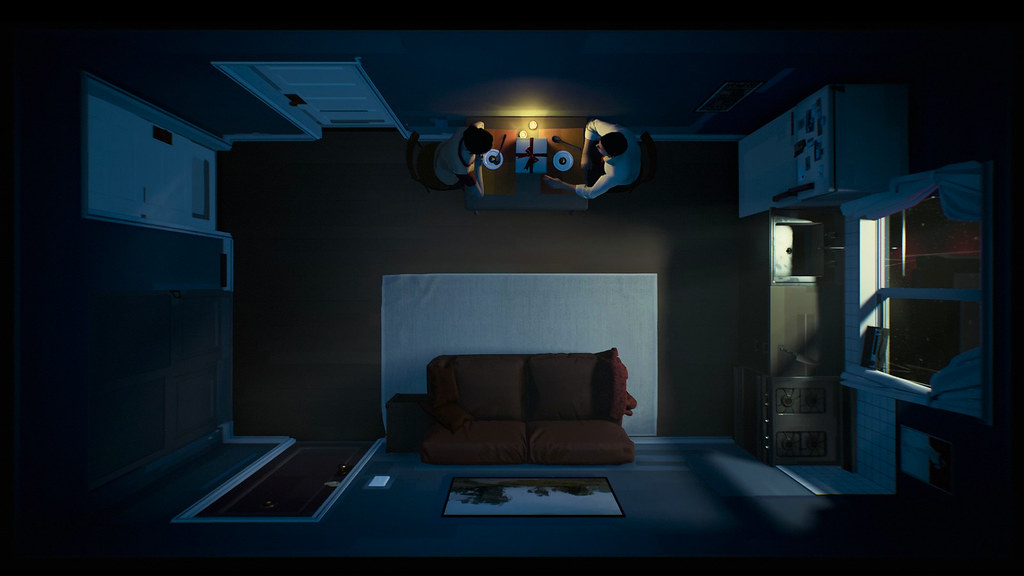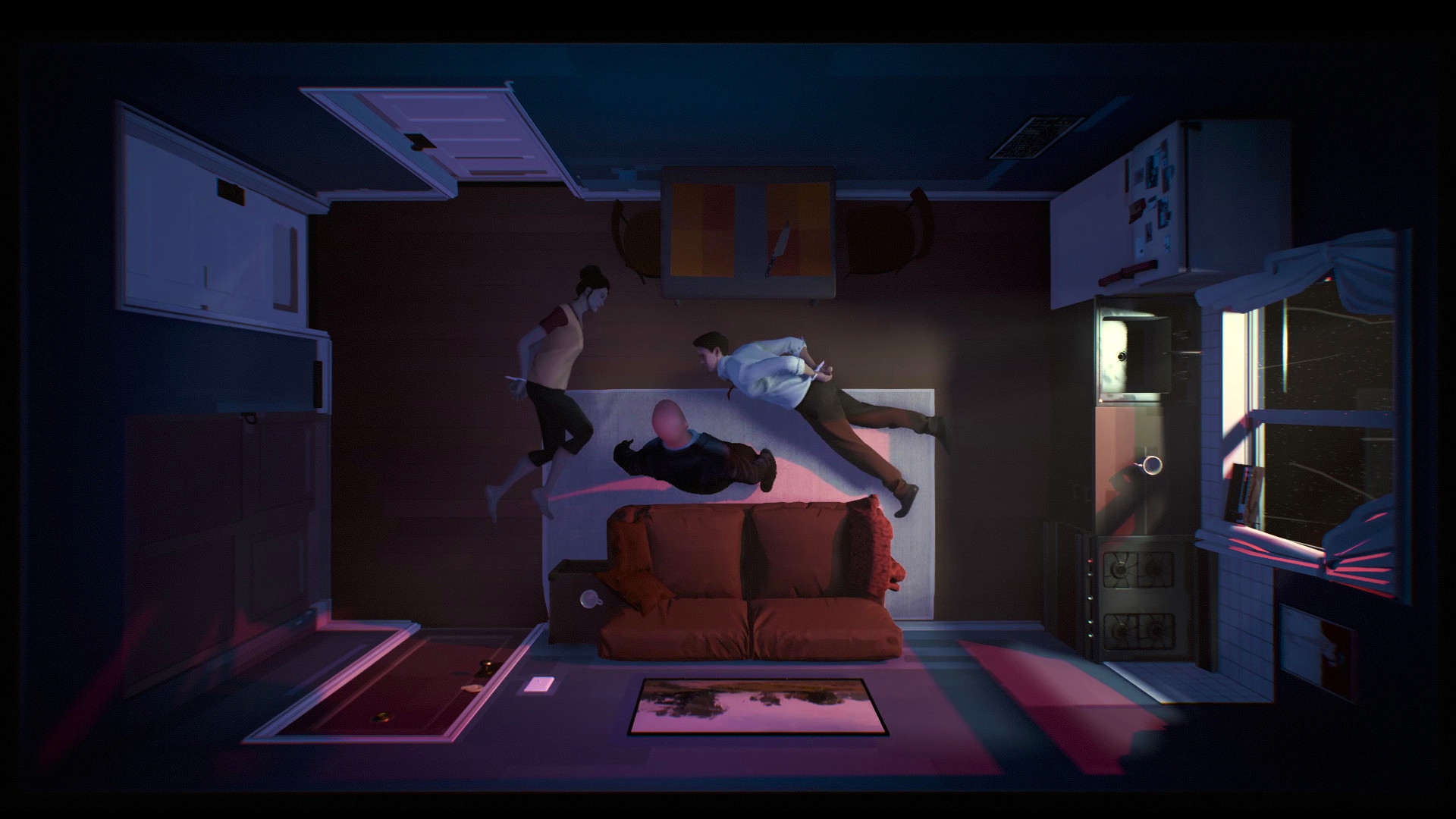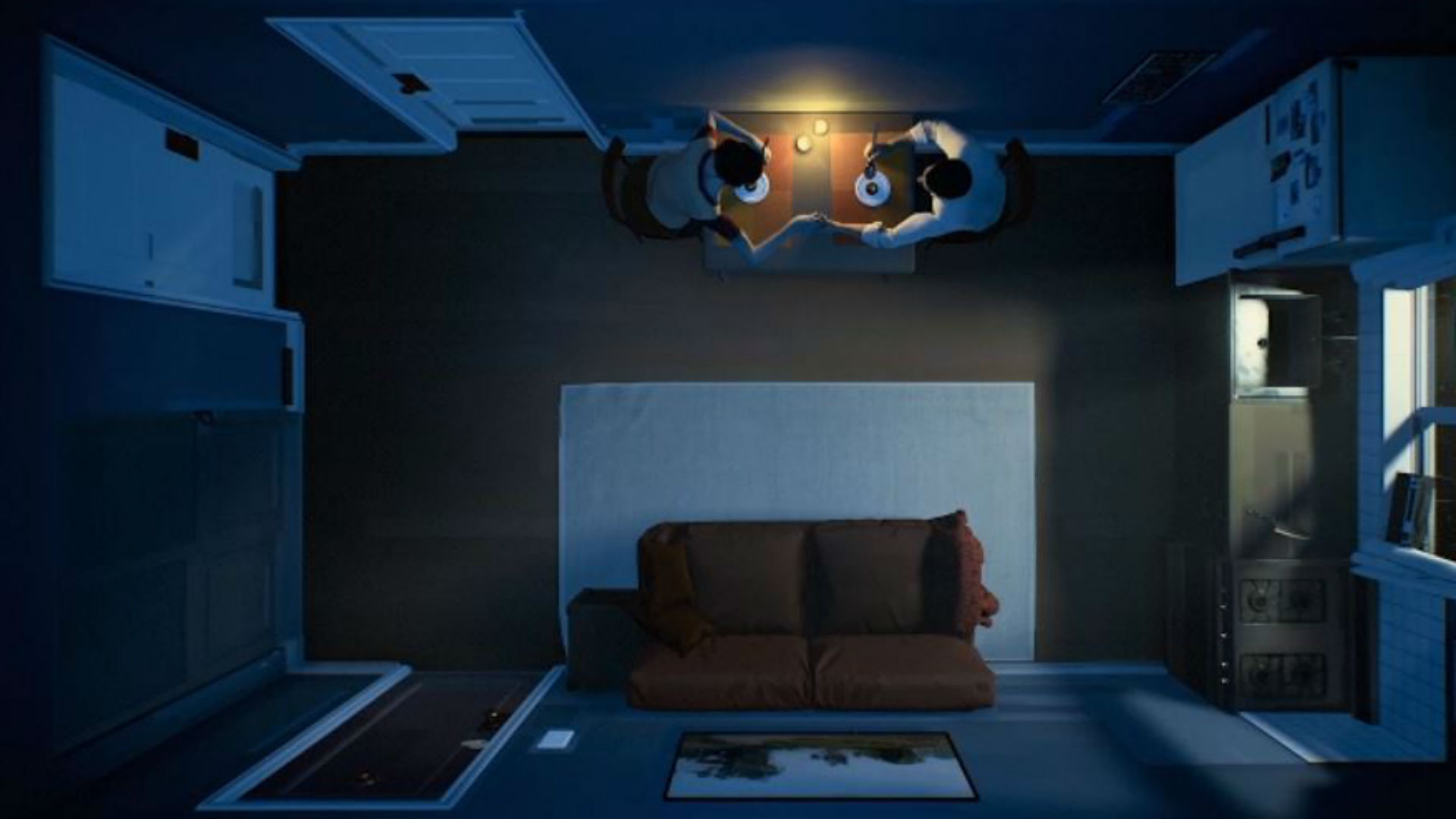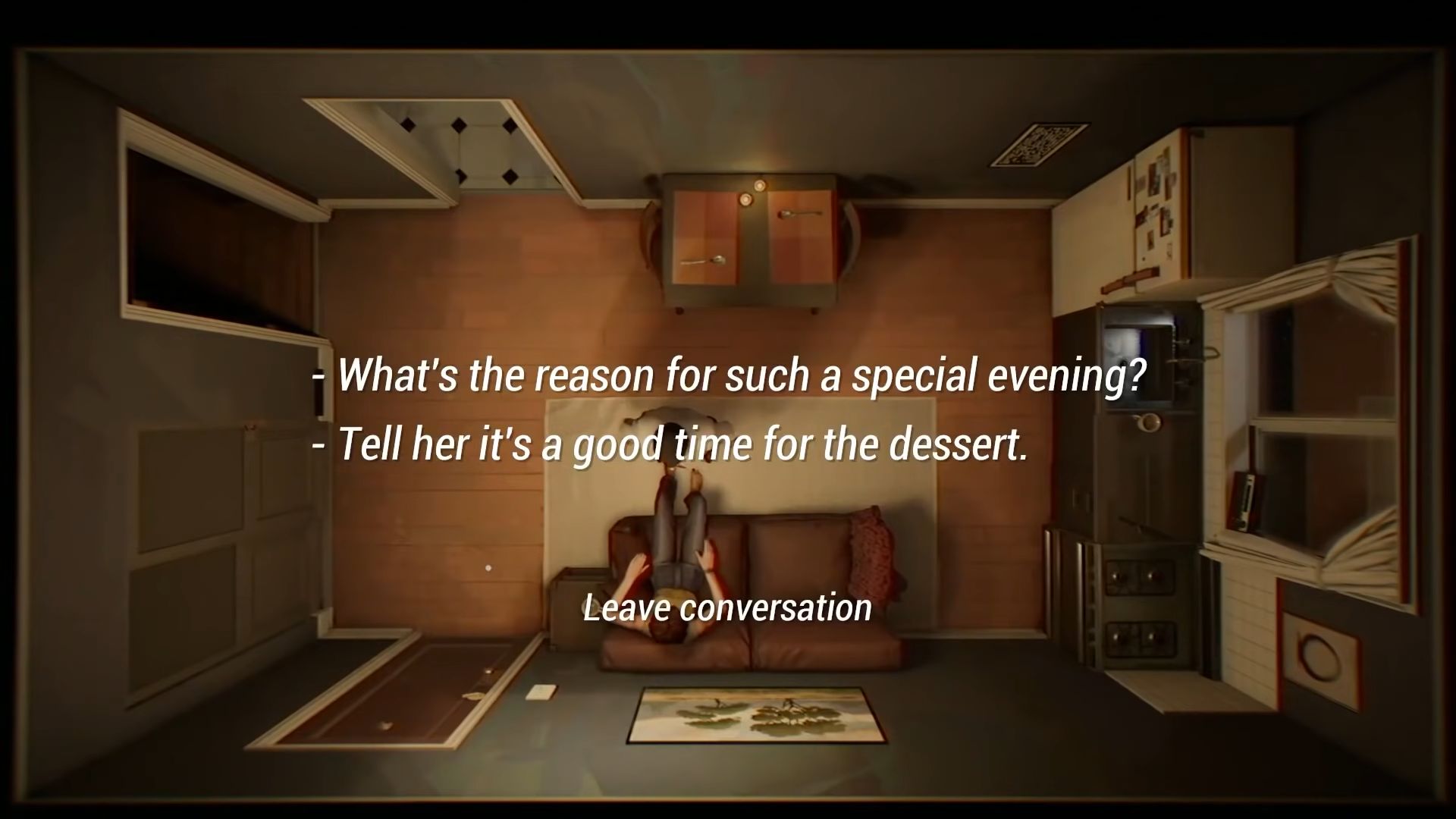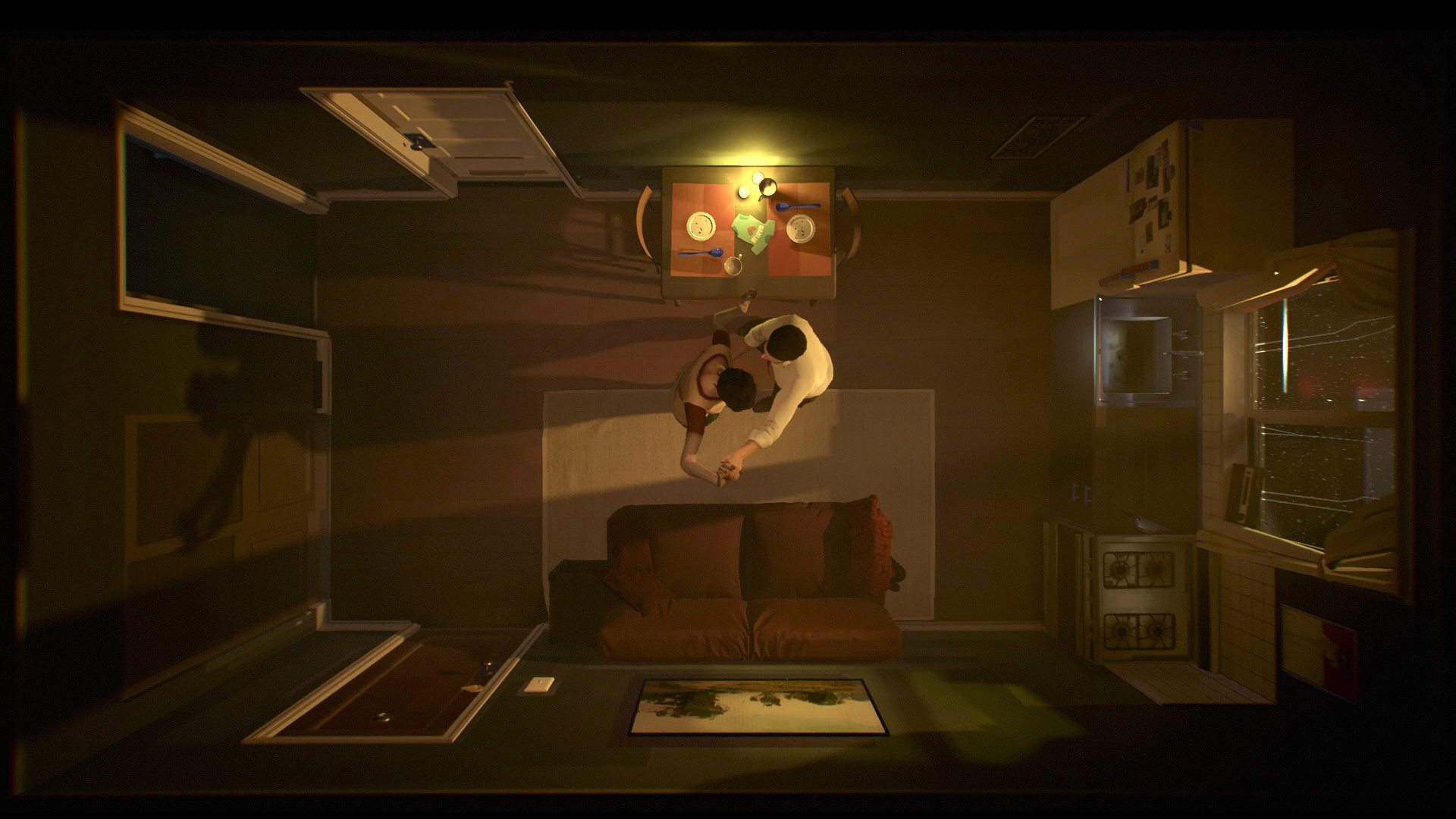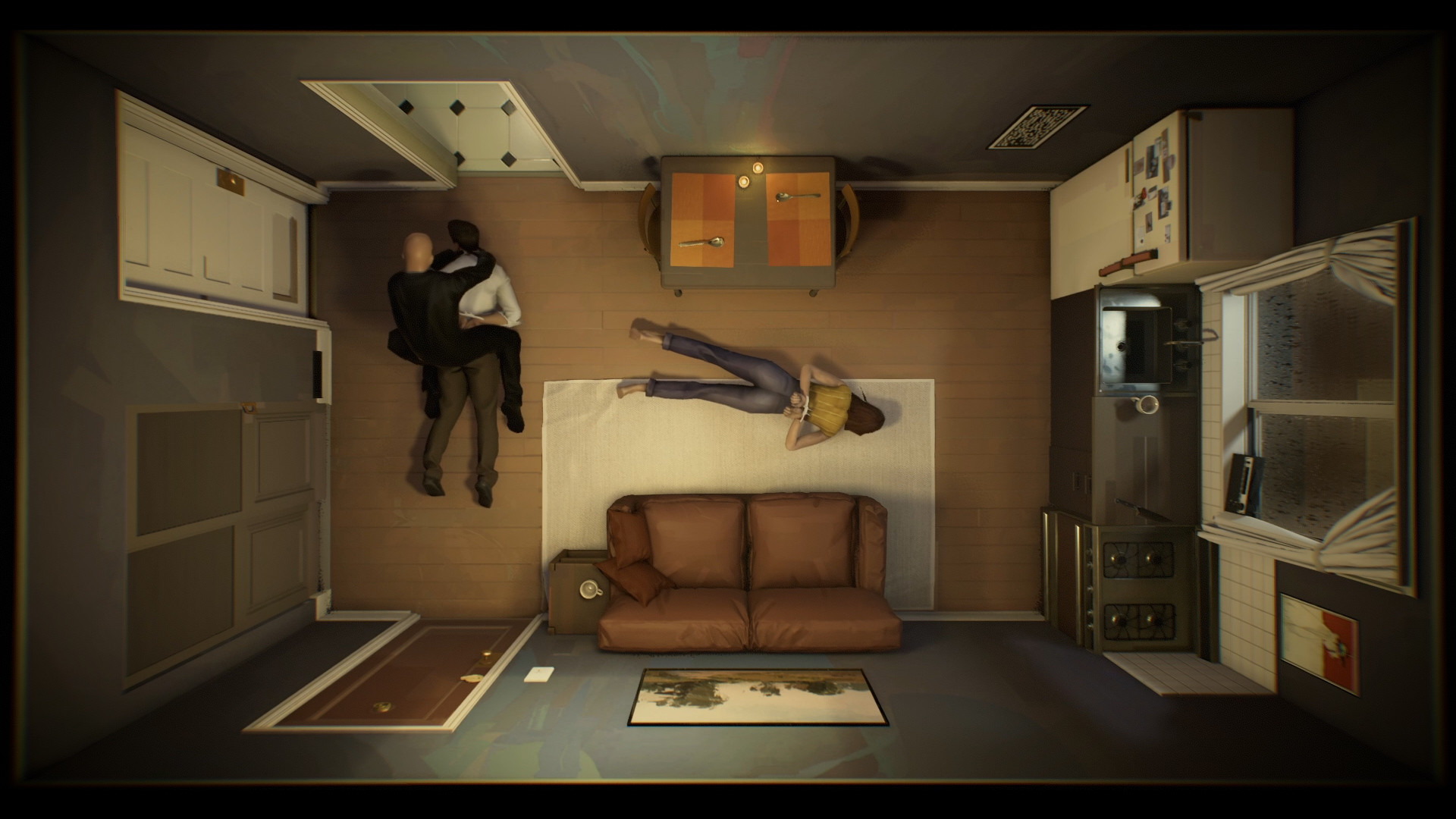
Between Microsoft’s first party titles – like Fable, Perfect Dark and whatnot – and third party games coming exclusively to the platform, there are a good number of interesting Xbox titles coming up. However, one title that’s looked intriguing since the very moment it was showcased was Twelve Minutes. The narrative thriller is out on August 19th for PC, Xbox One and Xbox Series X/S along with launching day one on Xbox Game Pass. So what’s the deal with Luis Antonio’s debut title and what sets it apart from the pack?
Story Set-up
The first thing to note is the story set-up. All events take place within the confines of a single apartment where a man and his wife are living. As time passes, the two have dinner and the man learns that his wife is pregnant. However, their celebration is interrupted by a knocking at the door, which leads to a police officer entering and restraining the two. As the man is knocked out and his wife seemingly killed, there’s a core mystery to find out what exactly is going on. What prompted these events?
Time Loop
Of course, the game doesn’t end there. The man finds himself back at the beginning, trapped in a time loop. The same events begin to unfold again and within the same 12 minutes, he’ll have to confront the same police officer. However, this could also be an opportunity to set things right and save his wife and their unborn child.
No Clear Goal
While preventing his wife’s murder is one goal, there is certainly a lot more to the story of Twelve Minutes than meets the eye. As the initial reveal trailer showcased, the wife is accused of murdering her father. Why is the police officer playing judge, jury and executioner? Is the player’s goal to stop her from being murdered? To kill the officer? To solve the mystery of the murder and prove her innocence? Or to break out of the loop? Why have only the past 12 minutes been looping? What are the conditions for the loop?
Experimentation
The player is free to try all sorts of things and the game will react accordingly. These could range from getting a cup of water for the wife and having a conversation about dessert to attacking the officer with a knife when you get the chance (or even taking the knife, hiding in the bathroom and striking when the opportunity arises). The reveal trailer also pointed towards a number of other scenarios, like hiding in the bathroom with the woman which can lead to the officer finding them there. If you don’t lock the door beforehand, then the officer will burst into the apartment that much more easily.
Dialogue Choices
Experimentation and trying different choices is key but even if this is the same scenario on repeat, you’re learning more and more new information. With each new cycle, you can use that information to try and impact the plot. This is manifested in the form of dialogue choices based on what you’ve experienced already. After looping once, the player gains a range of options, from telling the woman that it feels like the same day, informing her about the cop or even asking about her past. You can then try to prove that the day is restarting (and no, telling the wife that she’s thirsty based on the previous instance of giving her water won’t work) or go into more detail. Different decisions will likely open up different dialogue choices so you’re encouraged to play around and see what’s subsequently unlocked.
The Clock is Ticking
One of the many unique things about Twelve Minutes is that, like Outer Wilds, the clock is always ticking. You need to come up with something, anything within that time-span before the loop is reset. This could mean saying or doing different things at specific times, lest you miss the window of opportunity and have to start over. It gives a real sense of urgency to the proceedings while also making them feel more dynamic – what will each decision lead to and how will it impact the overall story? It’s up to the player to find out.
Top-Down Perspective
Another unique twist is in the perspective. The action unfolds from a top-down perspective, providing a full view of the apartment at all times. Gameplay-wise, this means that you can easily scan the different items available. Aesthetically, there is a bit of detachment from the main characters especially since you can’t really see their faces and expressions most of the time. But due to the size of the apartment, it’s almost like watching a stage play unfold while simultaneously having your actions influence the direction. It’s unique, at least for this kind of personal narrative, and fits the overall mechanics of the time loop well.
Film Influences
When talking about inspirations, it’s key to bring up movies like Groundhog Day where the protagonist is also trying to escape a time loop. As it turns out though, a number of films have served as inspiration for Twelve Minutes including Memento, Rear Window and The Shining. The design is heavily inspired by the work of Stanley Kubrick along with Alfred Hitchcock and David Fincher, to the extent that the official poster by mOcean pays homage to them. There is a definite sense of each film-maker’s work in Twelve Minutes, whether it’s the harrowing sense of doom inherent in Hitchcock’s work or the auteur theory of Kubrick.
Minimal, Focused Scope
Though players will be playing through a 12 minute loop multiple times, creator Luis Antonio estimated a total playtime of about six to eight hours. The original goal was to set the game in a neighborhood over a 24 hour period but the overall scope proved to be too large so the location and time was scaled back. Besides, while there have been a number of time looping titles that take place over a period of hours or even days, Twelve Minutes is one of the few that unfolds in real time, each time, over a relatively shorter span.
This overall focus on a more minimalist design extends to the gameplay – originally, there were timepieces that would help the player anticipate what was coming next. However, these were subsequently removed to keep the focus on the conversations and keeping track of details learned therein (which the small size of the apartment also helps with).
All-Star Cast
Despite the scale, there’s a lot of work that goes into a story like this. Motion capture for the characters and full voice-acting is included but surprisingly, Twelve Minutes has a star-studded cast. It includes James McAvoy of Split and X-Men fame voicing the man; Daisy Ridley of Star Wars voicing the woman; and Willem Dafoe, whose range includes Spider-Man, Finding Nemo and John Wick, as the police officer. The stage play comparison feels all the more apt, except it’s with high-profile actors flexing their range and talents over a dynamically evolving tale.








